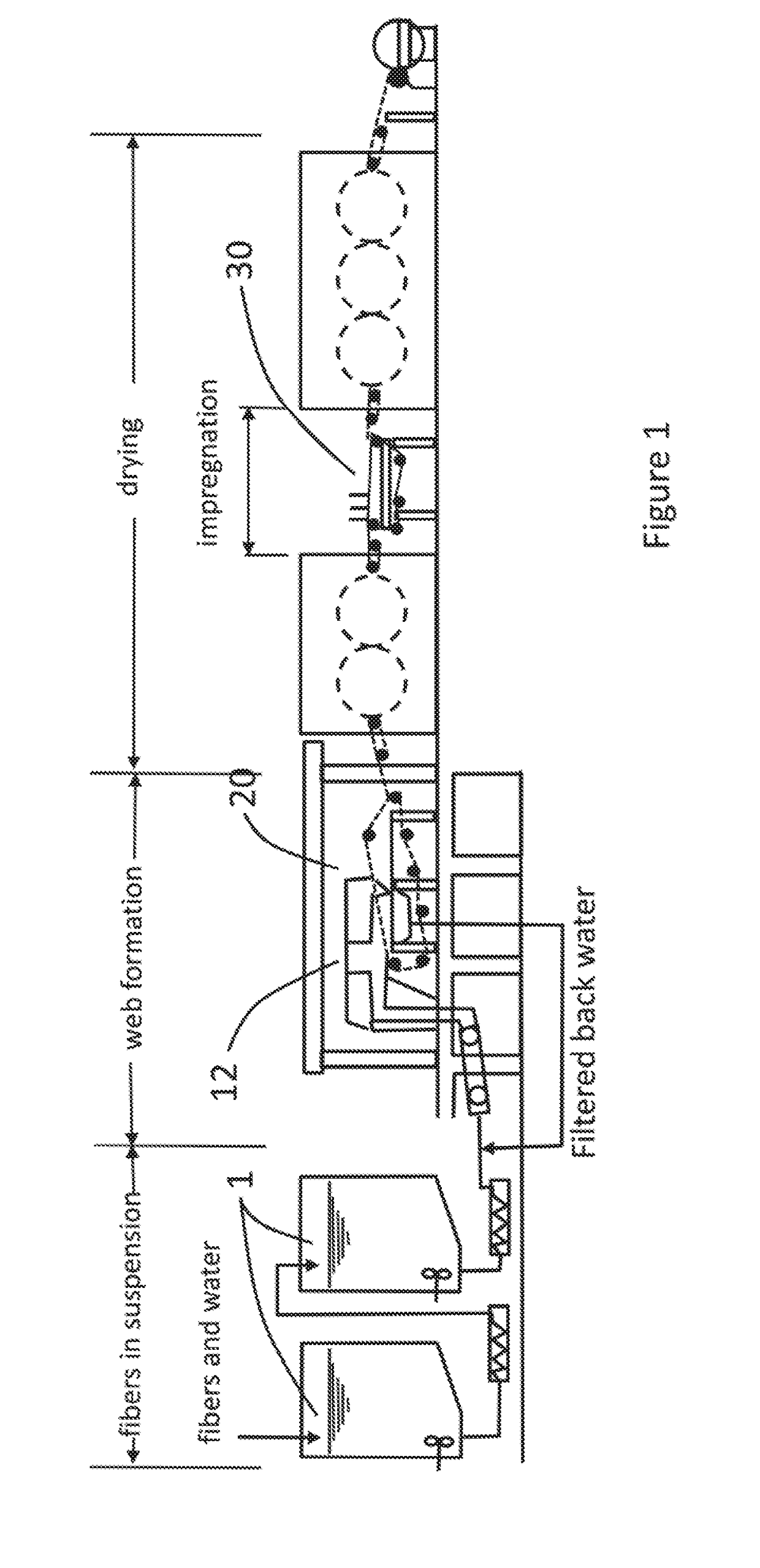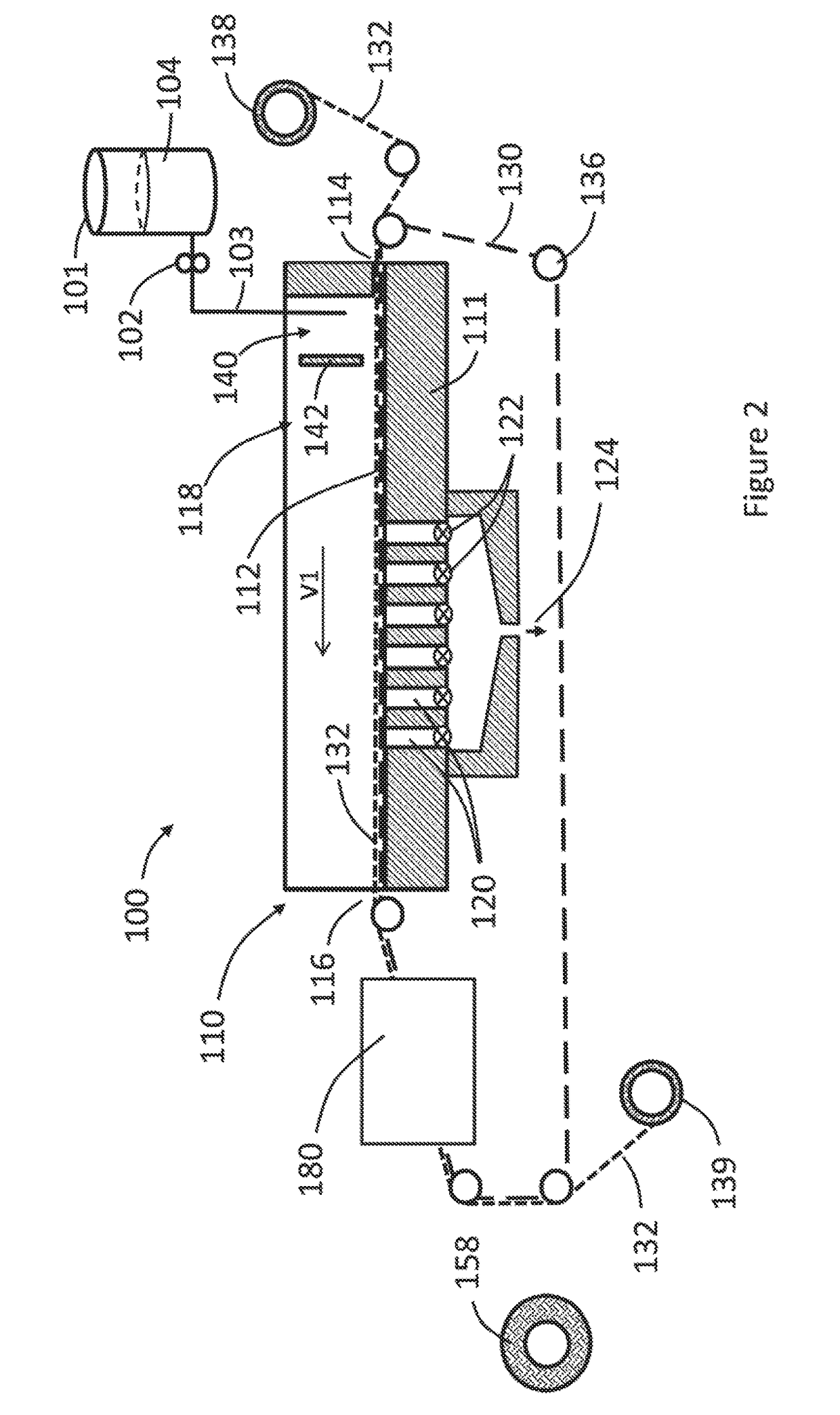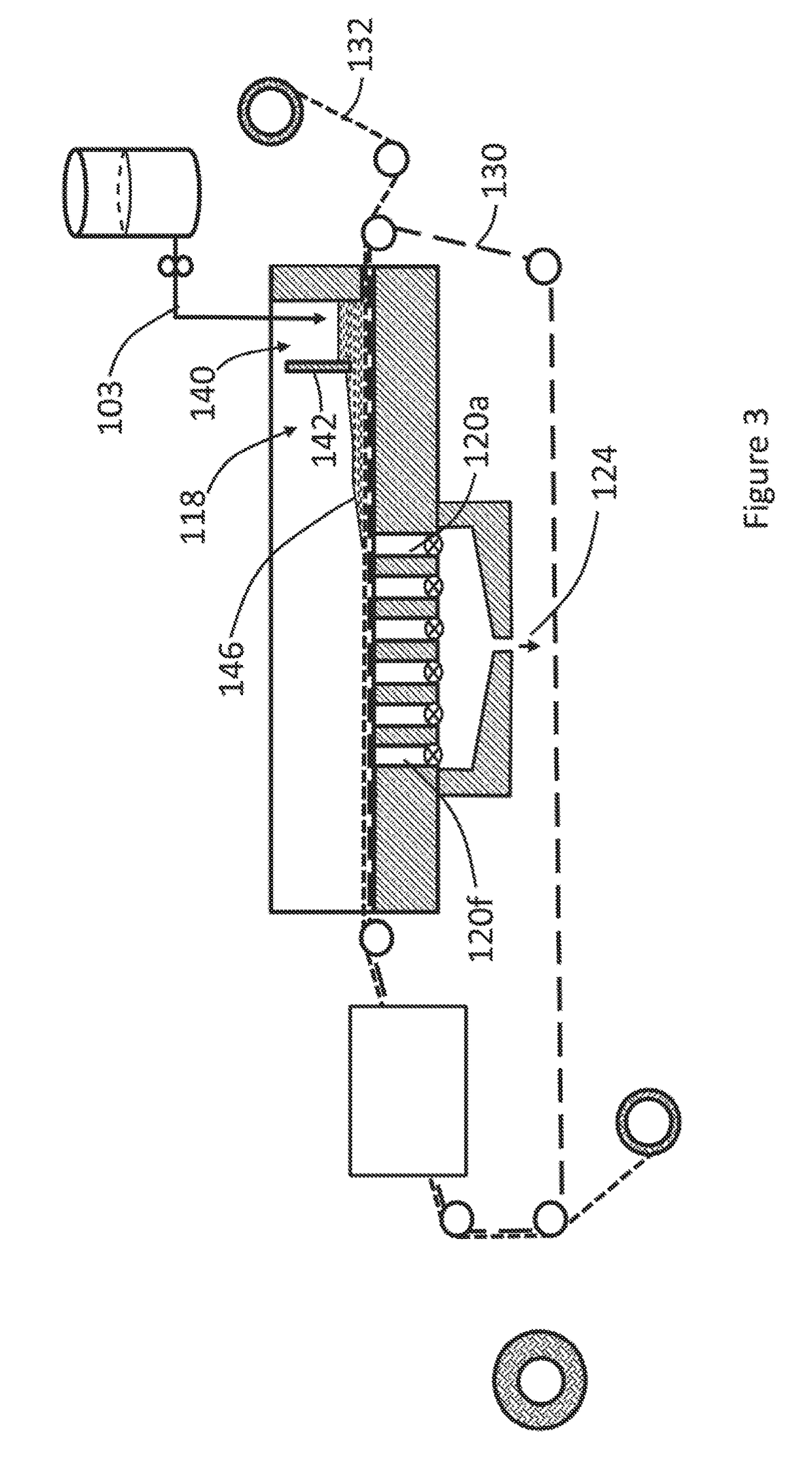Carbon nanotube sheet structure and method for its making
a carbon nanotube and sheet structure technology, applied in the field of carbon nanotubes, can solve the problems of large quantity of buckypapers that requires frequent change of filters, serious barriers to future practical applications of nanotube membranes, and inorganic chemistry, etc., to achieve the effect of improving separation or “peeling away, low basis weight and light weigh
- Summary
- Abstract
- Description
- Claims
- Application Information
AI Technical Summary
Benefits of technology
Problems solved by technology
Method used
Image
Examples
Embodiment Construction
[0051]As used herein, the terms “comprise,”“comprising,”“include,” and “including” are intended to be open, non-limiting terms, unless the contrary is expressly indicated.
[0052]As used herein, a “free-standing” sheet or structure of CNTs is one that is capable of formation, or separation from a filter material, and handling or manipulation without falling apart, or without significant flaking or crumbling of CNTs away from the sheet or structure.
[0053]A “continuous” sheet of material is an elongated sheet having a length that is orders of magnitude greater than the width of the sheet, and a roll of the sheet material.
[0054]Conventional wet-laid nonwovens are made by a modified papermaking process. That is, the fibers to be used are suspended in water or other dispersive liquid. A specialized machine is used to separate the water or other dispersive liquid from the fibers to form a uniform sheet of material, which is then dried. The wet-laid process has its origins in the manufacture...
PUM
| Property | Measurement | Unit |
|---|---|---|
| Weight | aaaaa | aaaaa |
| Width | aaaaa | aaaaa |
| Width | aaaaa | aaaaa |
Abstract
Description
Claims
Application Information
 Login to View More
Login to View More - R&D
- Intellectual Property
- Life Sciences
- Materials
- Tech Scout
- Unparalleled Data Quality
- Higher Quality Content
- 60% Fewer Hallucinations
Browse by: Latest US Patents, China's latest patents, Technical Efficacy Thesaurus, Application Domain, Technology Topic, Popular Technical Reports.
© 2025 PatSnap. All rights reserved.Legal|Privacy policy|Modern Slavery Act Transparency Statement|Sitemap|About US| Contact US: help@patsnap.com



